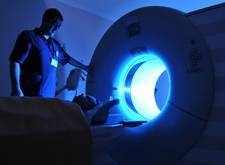Stages of Cancer: What you need to know
Medically Reviewed by Rajesh Bajaj, MD
After the doctor says “cancer,” a patient’s mind is flooded with a thousand questions. For most patients – “How bad is it?” – is the most urgent question.
“Over the years, a number of different methods have been used to determine the answer to this question,” says McLeod Oncologist Dr. Rajesh Bajaj. “Today, most cancer specialists use the TNM system to determine the stage of the cancer. The TNM system helps the specialists determine the type of treatment (surgery, chemotherapy, radiation therapy) and predict the chances of recovery or recurrence.”
At its simplest “T” stands for tumor, “N” stands for lymph nodes and “M” stands for metastasis (cancer that has spread to another part of the body).
T helps describe the size and location of the tumor. A number from 0 to 4 ranks the size and how much the tumor has grown into surrounding tissue.
N with a number from 1 to 3 reflects whether the cancer has spread to the lymph nodes, a mechanism in the body that helps fight infection. Most often, the more of a person’s 10 lymph nodes that are affected, the higher the N number. It may also be characterized as “regional” (near the original tumor) or “distant” (nodes further away from the tumor).
M with a number 1 indicates that the cancer has spread beyond the original location in the body.
Using an example from the National Cancer Institute, Breast Cancer staged as T3N2M0 would describe a large (T3) tumor that has spread to the nearby lymph nodes (N2) but has not spread to other parts of the body (M0).
TNM combinations can also refer to the overall severity of the cancer. In this case:
- Stage 0 means the cancer has not spread from its original site.
- Stages 1, 2, 3 indicate a larger tumor and the higher the number, the further the cancer has spread from the original site of the tumor.
A series of physical exams, blood and lab tests, imaging studies (CT/MRI) and results of a biopsy are used to establish the staging.
Once a “TNM” or “Staging number” has been established for a patient, it is used throughout the patient’s treatment – generally, even if the cancer spreads further.
TNM Staging is anatomical, based on the extent of the cancer’s spread. Other tests can further offer an idea of the cancer’s aggressiveness, even when it’s in early stages.
A few specific types of cancer — other than lung, breast and colon cancer — use different systems for staging:
- Cancers of the blood, such as leukemia, are not described using TNM, since they usually do not create tumors.
- Brain and spinal cancers use the “T” but otherwise, there is no single system for staging these tumors.
- Childhood cancers also have a unique staging system.
For more information on how cancers are staged and described, try these resources:
Stages of Breast Cancer
Cancer Staging Fact Sheet
You’ve Been Diagnosed with Cancer, Now What?
Have a question? Ask a Cancer Specialist
Sources include: McLeod Health, National Institutes of Health, American Cancer Society, American Society of Clinical Oncology, Breast Cancer Foundation, International Federation of Gynecology & Obstetrics
-
McLEOD REGIONAL MEDICAL CENTER FLORENCE
843-777-2000 -
McLEOD DARLINGTON
843-777-1100 -
McLEOD DILLON
843-774-4111 -
McLEOD LORIS
843-716-7000 -
McLEOD SEACOAST
843-390-8100 -
McLEOD CHERAW
843-537-7881 -
McLEOD CLARENDON
803-433-3000



-
McLEOD REGIONAL MEDICAL CENTER FLORENCE
843-777-2000 -
McLEOD DARLINGTON
843-777-1100 -
McLEOD DILLON
843-774-4111 -
McLEOD LORIS
843-716-7000 -
McLEOD SEACOAST
843-390-8100 -
McLEOD CHERAW
843-537-7881 -
McLEOD CLARENDON
803-433-3000
 Find a Doctor
Find a Doctor  Locations
Locations  Services
Services 